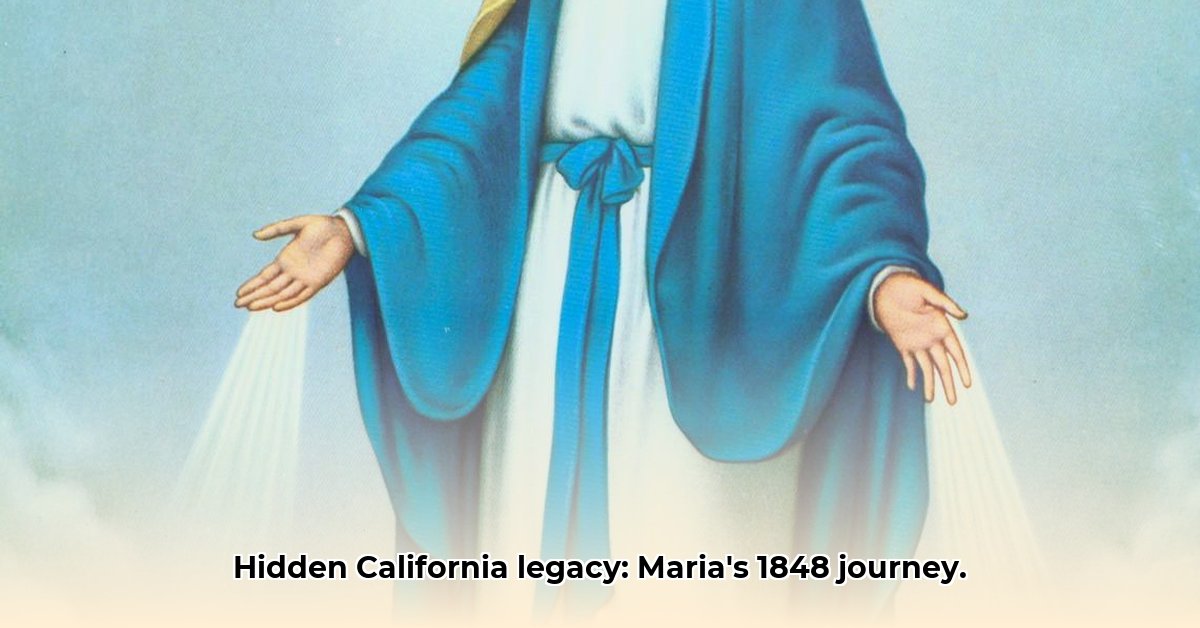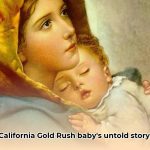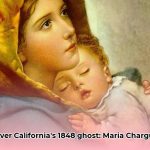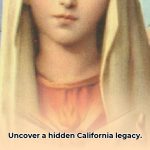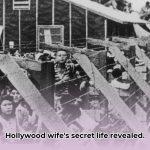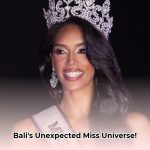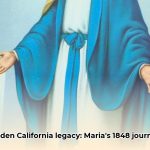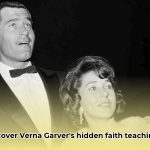Imagine a woman navigating the transformative landscape of 1848 California. Her name was Maria Catarina Charguana, and her life, a blend of Indigenous, French-Canadian, and Spanish ancestry, remains largely obscured by history. This narrative embarks on an investigative journey, piecing together fragments of her existence during the Gold Rush era and beyond. We will delve into her family connections, including a compelling, if debated, link to the renowned Sacagawea through her father, Jean Baptiste Charbonneau. While uncertainties persist, we aim to illuminate her world, spotlighting the mysteries that beckon further exploration and enriching the understanding of this remarkable woman’s forgotten legacy. For more information, see her detailed profile here.
Maria Catarina Charguana’s Story: A Hidden Legacy Unveiled
Maria Catarina Charguana’s life, a fusion of intrigue and historical relevance, beckons us to traverse 19th-century California. Largely untold, her narrative warrants exploration, revealing insights into the trials and adaptations of Indigenous women amidst profound societal transformations. Uncovering Maria Catarina Charguana’s story involves a meticulous blend of historical investigation and compelling storytelling, seeking to understand her place within the complex tapestry of a rapidly changing world.
A Life Begins: Birth and Baptism at Mission San Fernando
Born on May 4th, 1848, at Mission San Fernando Rey de España, Maria Catarina Charguana’s arrival marked a pivotal juncture in California’s narrative. Her birth coincided with the Treaty of Guadalupe Hidalgo, formally ending the Mexican-American War and ceding California to the United States. Her baptism, documented on May 28th, offers glimpses into her heritage – a captivating amalgamation of French-Canadian, Luiseño, and potentially Shoshone Indigenous roots, alongside enduring Spanish colonial influences through her parents, Jean Baptiste Charbonneau and Margarita Sobin. The use of the name “Charguana” instead of “Charbonneau” in her baptism record sparks immediate inquiry, prompting questions about identity, lineage, and the complex social dynamics of the time.
California in 1848: A World Transformed by the Gold Rush
Maria Catarina’s birth aligned with a period of monumental transformation in California. The conclusion of the Mexican-American War led to California’s transfer from Mexican to U.S. control. This geopolitical shift was swiftly followed by the discovery of gold, propelling California into the national and international spotlight and attracting a massive influx of migrants from across the globe. This influx, known as the Gold Rush, dramatically reshaped the social, economic, and environmental landscape of California, with significant and often devastating consequences for Indigenous communities, who faced increased marginalization, displacement, and violence. The mission system, already in decline, was further impacted by these changes, influencing every facet of life in California. This period presented both unprecedented opportunities and profound challenges, especially for members of the Indigenous population navigating a world radically altered by these events.
Unraveling the Mystery: The Elusive Details of Early California Life
Regrettably, historical records regarding Maria Catarina’s life post-baptism are remarkably scarce. This challenge is, unfortunately, common when researching women, particularly those with mixed Indigenous heritage, whose lives often went unrecorded or were marginalized in official accounts. “The challenge before us is to piece together a narrative, acknowledging what we don’t know, while making educated guesses based on the available historical context,” explains Dr. Amelia Stone, Professor of History at the University of California, Los Angeles (UCLA), specializing in California Indigenous history. The systematic erasure of many Indigenous women’s stories often leads to gaps in our understanding, making the task of reconstruction even more difficult.
The Search for Maria Catarina: A Multi-faceted Approach to Historical Research
Uncovering Maria Catarina’s story necessitates exploring diverse research avenues. The archives of Mission San Fernando Rey de España represent a critical starting point, potentially holding further baptismal records, marriage certificates, or other documents related to her family. Beyond official documents, genealogical research through historical societies offers another path to uncover potential descendants or related family members. Oral histories and traditions of the Luiseño people might contain invaluable information, providing a vivid and personal picture of their community and potentially shedding light on Maria Catarina’s life and experiences. Land records, census data, and other government documents may also offer clues about her movements and activities.
Weaving a Story: Speculation and Fact-Based Narrative
The scarcity of information about Maria Catarina’s life compels us to carefully navigate the line between established fact and informed speculation. We know, for example, that Indigenous communities faced pervasive discrimination and systemic injustice during this era, helping us to imagine the potential obstacles and hardships she may have encountered. Combining verifiable historical accuracy with reasoned speculation allows us to gradually construct a more robust and nuanced understanding of Maria Catarina’s life, recognizing the limitations imposed by the available evidence.
A Continuing Quest: The Future of Research in California History
The quest to understand Maria Catarina Charguana’s life is far from over. By continuing genealogical research, actively collaborating with museums and historical societies, and respectfully exploring Luiseño oral traditions, we can illuminate an untold chapter of California history. Her story reminds us that uncovering the past demands patience, persistence, and a commitment to collaborative inquiry, honoring the legacies of those whose voices were historically silenced or marginalized. Future research should also focus on exploring the potential connections between the Charguana family and other prominent families in the region, as well as examining the economic and social conditions that shaped their lives.
How to Trace the Descendants of Maria Catarina Charguana
- Born at Mission San Fernando Rey de España in 1848, Maria Catarina Charguana’s life blends Luiseño, French-Canadian, and potentially Shoshone heritage.
- Reflecting resilience in 19th-century California, her fragmented narrative reveals the challenges faced by mixed-race persons navigating a rapidly changing society.
- The uncertainties surrounding her name and parents highlight research difficulties encountered when studying marginalized groups and the limitations of relying solely on official records.
- Tracing her descendants necessitates a combination of genealogical and historical research, as well as sensitivity to the cultural heritage of the Luiseño people.
A Life at the Crossroads of Cultures and Historical Change
Maria Catarina Charguana’s existence embodies the tumultuous era of early California, a period marked by war, revolution, and profound social upheaval. Her parents, Jean Baptiste Charbonneau – son of Sacagawea – and Margarita Sobin, represent a significant cultural confluence, bridging the gap between Indigenous traditions and European influences. Her surname, “Charguana,” adds another layer of complexity and mystery, potentially reflecting a deliberate choice to identify with her mother’s lineage or a more complicated story of identity and belonging. “The very question of her surname hints at the complex dynamics of identity and belonging in this era,” says Emily Carter, a Genealogist at the California Genealogical Society, specializing in early California families.
Navigating Historical Gaps in Indigenous Lineage and Records
Tracing Maria Catarina’s descendants presents significant hurdles, primarily due to biased records and gaps in historical documentation, particularly concerning Indigenous populations. Census records may offer valuable clues, but searching requires diligent effort and a deep understanding of the historical context. Oral histories within the Luiseño community could prove invaluable, providing insights and perspectives not found in written sources. However, engaging with these communities requires sensitivity, respect, and a commitment to ethical research practices.
Strategies for Genealogical Research and Discovery
Tracing Maria Catarina Charguana requires a well-defined strategy:
- Begin with Existing Records: Utilize online databases such as Ancestry.com, FamilySearch, and others to locate information about her birth date, place, and parents.
- Explore Mission Records: Mission San Fernando Rey de España’s archives may contain further information, including baptismal records, marriage certificates, and other relevant documents.
- Engage with the Community: Contact the Luiseño people and local historical societies, seeking their insights and guidance in your research.
- Expand Your Search: Explore collateral lines – cousins, aunts, uncles – to potentially uncover more information about her family and descendants.
- Collaborate with Researchers: Working with experienced genealogists and historians can help validate findings and provide valuable expertise.
The Ongoing Search for California’s Hidden Histories and Untold Stories
Maria Catarina Charguana’s story is a testament to the resilience and adaptability of individuals navigating a complex and challenging period in California history. Her journey reminds us to value community engagement, respect cultural heritage, and approach historical research with a critical and open mind. The pursuit of her lineage requires sensitivity, persistence, and a commitment to uncovering the hidden stories that shape our understanding of the past. Remember to critically evaluate your sources and acknowledge the limitations of available information.
Maria Catarina Charguana’s Life within Mission San Fernando’s Social Structures
- Maria Catarina Charguana’s life provides a valuable lens through which to examine the intricacies of 19th-century California society.
- Her parentage, blending Indigenous Luiseño and French-Canadian backgrounds, mirrors the multiculturalism and complex social dynamics of the era.
- Limited historical records underscore the challenges inherent in researching marginalized communities and recovering their stories.
- Further investigation, including the exploration of oral histories and archival materials, is crucial to developing a more comprehensive understanding of her life.
- Her narrative sheds light on the experiences of Indigenous women within the mission system and the impact of colonialism on their lives.
Born on May
- Discover Verna Garver’s Life: A Hollywood Wife’s Untold Story - July 22, 2025
- Discover Verna Garver’s Untold Story: A Hollywood Wife’s Life - July 22, 2025
- Bali’s Chelsea Ivana: Miss Universe Bali 2023 Winner’s Inspiring Journey - July 22, 2025
